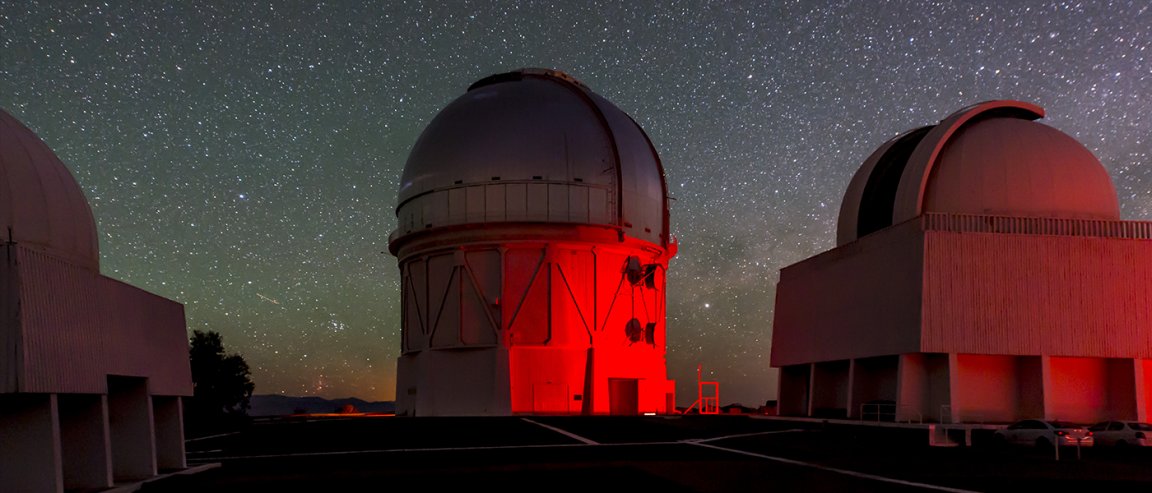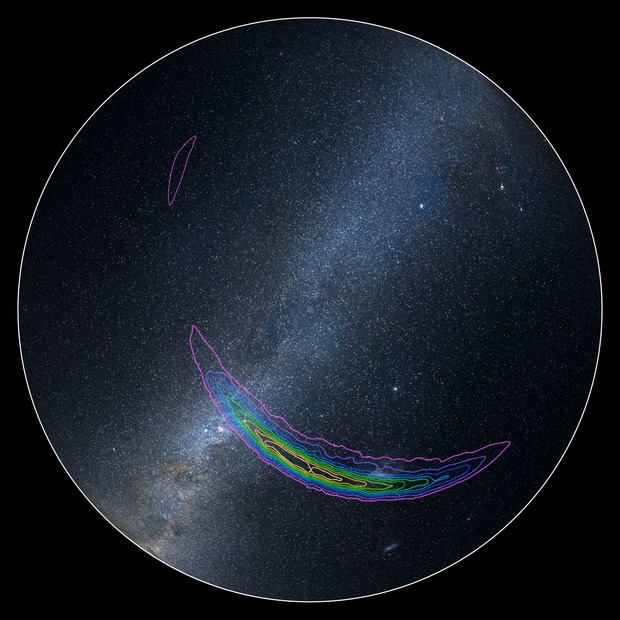
Hunting for the Source
Immediately after the historic detection of gravitational waves last September, a team of astronomers at the Cerro Tololo Inter-American Observatory in Chile was mobilized to scan the skies for any glimmer of visible light that might be associated with the event.
Considering the unprecedented nature of the gravitational wave discovery, it was the first such scan ever undertaken, and it will serve as a model for follow-up observations accompanying future gravitational wave detections.
The team quickly deployed their telescopes to search the part of the heavens thought to be the source location for the event (provisionally designated “GW150914”), but sadly, they failed to find any visible light object that could be obviously correlated with it. But, in this case, even failure was eloquent: it enabled researchers to winnow the competing hypotheses, reject untenable ideas, and settle upon and verify the explanation most suited to the observed event.
Hunting for a visible light counterpart to something so ephemeral and fleeting as gravitational waves was a tall order, particularly when the search area was so poorly constrained—since only two detectors were operational at the time of the discovery, it was impossible to fully triangulate the position of GW150914 in the sky. So the team was forced to scan a portion of the sky equal to about 2800 times the size of the full moon.
But the team soldiered on, repeatedly sweeping that suddenly very important section of the cosmos with their instruments for a period of several weeks, using the wide-field Dark Energy Camera (DECam) mounted on the Blanco 4 meter telescope at the Cerro Tololo Observatory; alas, their efforts proved fruitless.
Still, as the team concludes in their paper detailing their efforts, “[O]ur search is a crucial first step and demonstrates the viability of DECam for deep optical follow-up of GW events.”

Failed Supernovae in the LMC
Despite their inability to locate a visible counterpart to the gravitational wave event, the team demonstrated that rapidly notifying and mobilizing optical observatories will be a crucial component of gravitational wave astronomy in the future.
For example, the team was able to determine that whatever had produced the gravitational waves, it wasn’t associated with any kind of supernova or stellar collapse in the nearby Large Magellanic Cloud (LMC). The reason this neighboring galaxy was singled out was because it fell smack in the middle of the probability map for the GW150914 event distributed by the LIGO team. In light of the galaxy’s huge star formation rate, and high number of super-luminous giant stars—like S Doradus and R136a1 (265 times more massive than the Sun!)—it seemed plausible that whatever had produced the burst of gravitational waves might have originated there.
But after putting together a catalogue of 152 high luminosity supergiants in the LMC, the team was able to show that all of them were alive and well; they were also able to rule out the possibility of a “failed supernova,” or a situation in which a star simply collapsed into a black hole without triggering a stellar explosion.
Eventually, as we now know, the LIGO team determined that the gravitational waves were generated by a binary black hole merger some 1.3 billion light years away; in the first weeks after the detection, however, the nature of the event was still unknown. So even though telescopic surveys were unable to locate a visible counterpart, they were still able to shed some light on the event by quickly telling us what it was not.
And this has important implications for the future of gravitational wave astronomy. As the detectors become more sensitive, astronomers will someday locate an optical signature for a gravitational wave event; and just imagine the kind of insights we’ll be able to glean about extreme astrophysical phenomena.
With neutrino detectors, telescopes scanning the entire electromagnetic spectrum, and now gravitational wave interferometers, the parts of creation still hidden from prying eyes are becoming few and far between.